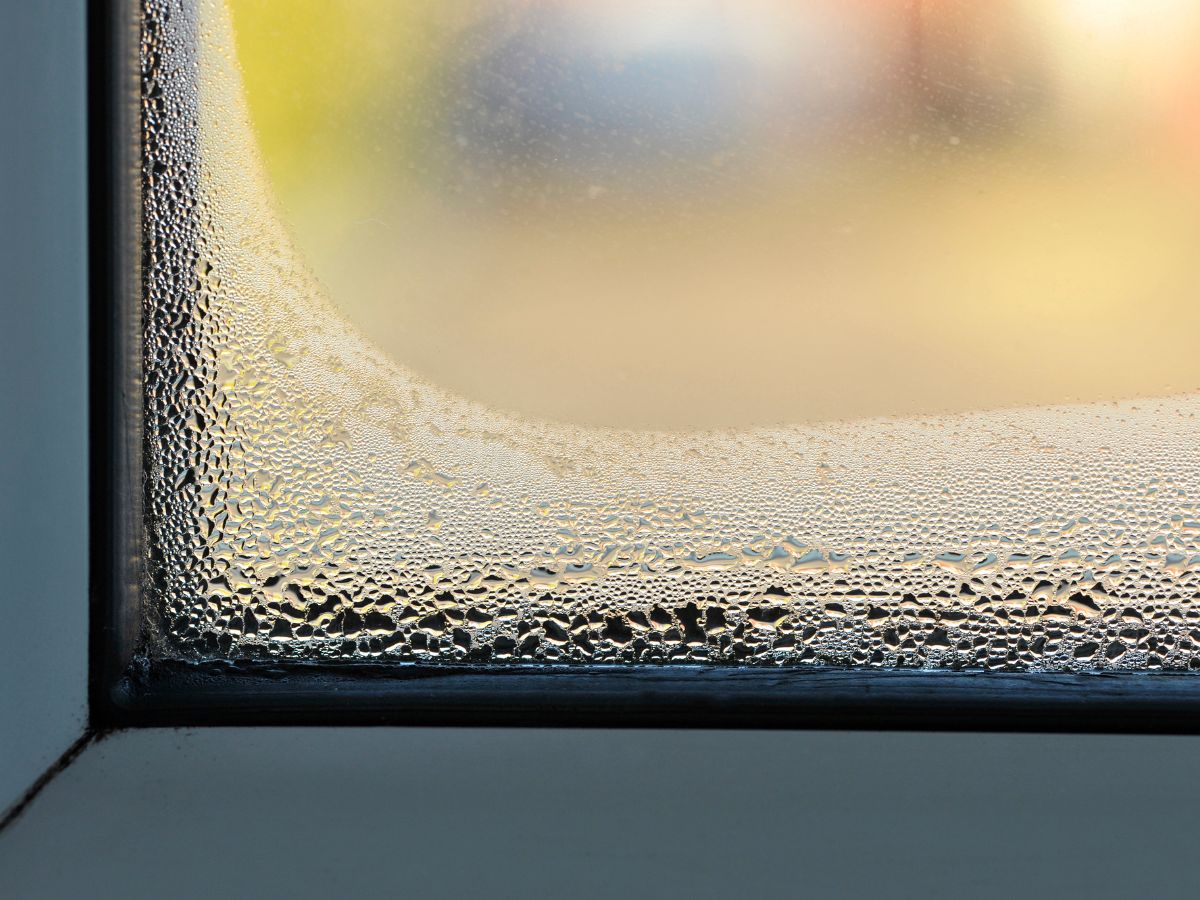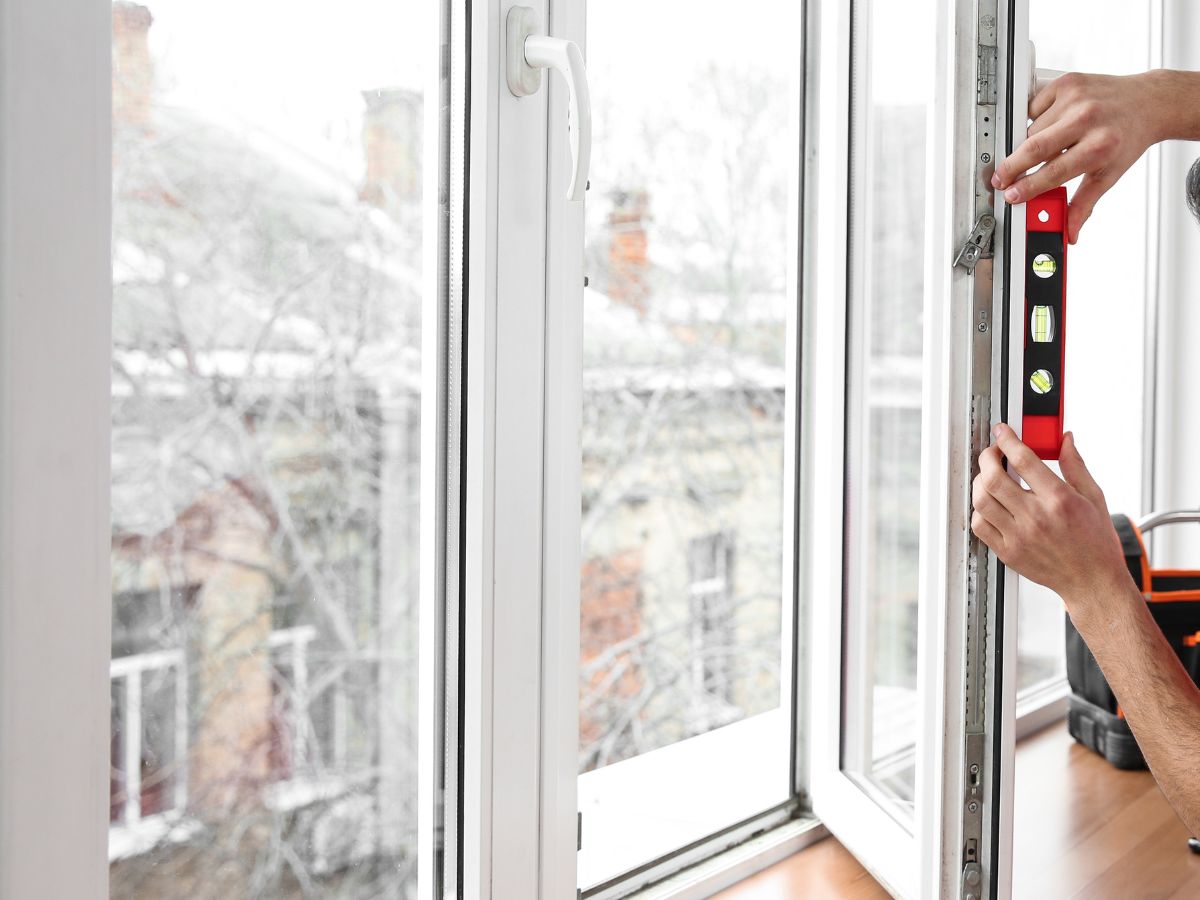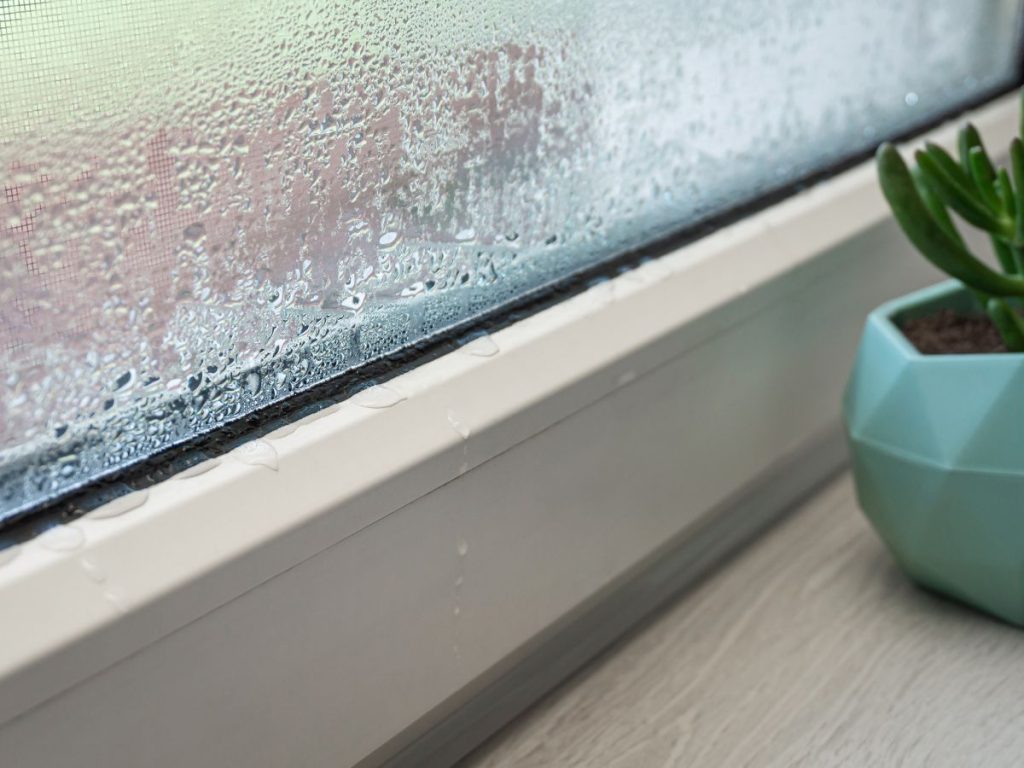It starts with a bit of fog on the window. Then water droplets. Sometimes, even puddles near the sill. If you live in Toronto or anywhere across the GTA, you’ve likely noticed condensation forming on your windows or doors at some point, especially in the colder months. But is window condensation just an annoying winter quirk? Or a bigger issue?
Let’s be honest: window condensation can be confusing. Sometimes it’s completely normal. Other times, it’s the warning sign that your home’s envelope is failing. The key is understanding the difference. At ALDA Windows and Doors, we’ve helped hundreds of homeowners across the GTA figure out when it’s time for a window replacement, and when it’s just time to crack a window.
We’re here to clear things up.
What Causes Window Condensation in GTA Homes?
Window condensation happens when humid indoor air comes into contact with a cooler surface, like the glass on your windows or doors. That air releases moisture, and boom: fog, droplets, or even ice.
The climate in Toronto and the surrounding region makes this worse. Freezing outdoor temps and tightly sealed modern homes mean there’s often nowhere for moisture to go. You’re left with sweaty windows in the morning and wondering what’s going on.
Condensation can show up on:
- Vinyl windows, especially in bedrooms and kitchens
- Sliding patio doors with lots of glass surface
- Steel entry doors with internal insulation that can still get cold to the touch
- Glass front doors or front doors with sidelights, where warm air hits cold decorative glass
- Even storm doors when trap warm air between them and the main entry
Humidity sources make it worse: long showers, cooking without ventilation, humidifiers, or even a basement that isn’t properly sealed. But again, the issue isn’t just about where you see the condensation; it’s also about how often and what kind you’re seeing.
When Is Window Condensation Normal?
Let’s say you wake up in late November, it’s -10°C outside, and you see some fogging at the edges of your bedroom windows. No puddles, no streaking, and it clears up by noon.
That’s totally normal.
Seasonal window condensation is expected in energy-efficient homes because vinyl windows and tightly sealed doors don’t let moisture escape easily. Here’s when you shouldn’t panic:
- Morning fogging that clears quickly
- Thin mist at the bottom corners of windows
- Occasional buildup during extreme cold snaps
- Fog on black front doors or modern front doors that face harsh winds
This isn’t a sign your windows or doors are failing. In fact, it may mean they’re working as intended, trapping heat inside. Still, it’s worth being aware of the difference between harmless fog and the signs that a replacement might be around the corner.

When Is Window Condensation a Problem?
Now, if you’re seeing water inside the glass panes, streaks that drip down into your frames, or little puddles forming on your sills, that’s not normal. That’s when condensation goes from “seasonal” to “structural.” And that’s when you want to start thinking about window condensation replacement.
Here’s what to watch for:
- Moisture between panes of double- or triple-glazed windows: this means the seal is broken and insulating gases are gone
- Persistent fogging that doesn’t go away midday, especially in south-facing rooms
- Ice buildup on the inside during winter, this can cause wood rot, cracked seals, or mold
- Warping of window frames or door sills from repeated moisture exposure
- Condensation on newly installed doors or windows, which could signal poor installation or product quality
If you notice these signs, your windows and doors aren’t just fogging, they’re failing. And they’re costing you in comfort, energy bills, and possibly your indoor air quality.
Common Pain Points from Toronto Homeowners
We hear the same complaints again and again:
- “I replaced my windows five years ago. Why am I seeing fog already?”
- “There’s water inside my front door with sidelights. Is that normal?”
- “My sliding patio doors are always dripping in the winter.”
- “The window in my baby’s room has mold on the sill. I’m worried it’s unhealthy.”
These aren’t just cosmetic issues, they’re signs your home’s envelope isn’t protecting you anymore. And Toronto’s freeze-thaw cycles only make it worse.
How To Fix Windows With Condensation
Not every condensation problem means your windows or doors need to be replaced tomorrow, but ignoring it can lead to damage, energy loss, and mold. The good news? You can take real steps to reduce it before turning to full window condensation replacement. Here’s what works in actual GTA homes.

Invest in High-Performance, Energy-Efficient Windows and Doors
Start with the source. Cheap, outdated windows are the number one cause of stubborn, damaging condensation. We always recommend choosing ENERGY STAR® certified windows and doors, which are designed to perform in Canada’s varied climate—and especially in the Toronto area, where winters are sharp and summers are humid.
Look for these key features:
- Triple glazing for maximum insulation
- Low-emissivity (Low-E) coatings to reduce interior heat loss
- Inert gases like argon or krypton between panes for thermal efficiency
- Thermally improved spacer bars that prevent heat bridging at the glass edges
- Insulated frames and sashes to reduce surface cooling
- Greater air tightness so humid air doesn’t get trapped inside the unit
These materials and upgrades don’t just help with comfort; they reduce the chance of interior moisture forming on glass or door panels.
Now, a heads-up: with really efficient Low-E windows, you may sometimes see exterior condensation (especially in the early morning). That’s not a problem, it’s a sign that the windows are blocking heat loss effectively. It’s interior condensation you need to watch.
Improve Air Circulation Around Windows and Doors
It doesn’t matter how good your windows are if the air around them stays cold and stagnant. In many Toronto homes, we see black front doors, sliding patio doors, and even front doors with sidelights suffering from fogging just because of blocked airflow.
Here’s how to fix that:
- Keep vents and radiators unobstructed, as many are placed directly below windows for this reason
- Avoid deep sills that trap cool air against the glass
- Open blinds and drapes during the day to encourage airflow
- Move large furniture pieces away from exterior walls and corners
- Add circulation fans in high-moisture areas like kitchens and bathrooms
Warm air moving past the glass keeps it from falling below the dew point. If you notice fog forming behind blinds in the morning, that’s your signal: your windows need to breathe.
Use (and Maintain) Your Heat Recovery Ventilator (HRV)
Modern homes and many new builds across the GTA are tightly sealed for energy efficiency. That’s great for heating bills, but not for humidity. If your home has an HRV system, it should be running, especially in the winter months.
An HRV pulls out stale, moist indoor air and replaces it with fresh, dry air from outside, while recovering heat from the outgoing air. It’s one of the most effective ways to control indoor moisture without over-drying your living space.
Tips:
- Make sure your HRV is running continuously or on a timed schedule in winter
- Clean or replace the filters regularly (every 3 months)
- Balance it properly so it doesn’t over-pressurize or depressurize your home
No HRV? Consider installing one, or at least use exhaust fans consistently when cooking, showering, or doing laundry. Poor indoor ventilation is one of the biggest reasons people start searching for window condensation replacement in the first place.

Control Indoor Humidity
Too much humidity is the root of most condensation problems. Ideally, your indoor humidity should sit between 30% and 50% in winter. Higher than that? Expect fog and frost on your windows, even the new ones.
To lower humidity:
- Run bathroom fans for at least 20 minutes after showers
- Use a dehumidifier in basements or large open-concept spaces
- Avoid drying clothes indoors unless you have proper ventilation
- Cover pots while cooking and use the range hood
- Keep houseplants to a reasonable minimum
Many homeowners are surprised by how fast condensation disappears once indoor humidity drops to a healthy range.
Is It Time for Window Replacement Because of Condensation?
Here’s how to know:
Signs |
What It Means |
What to Do |
| Water between panes | Seal failure | Replace the window |
| Ice forming on interior | Thermal break failure | Consider upgrading to insulated products |
| Mold around sill/frame | Moisture not drying out | Increase ventilation or replace |
| Condensation on new doors/windows | Possible installation issue | Get a second opinion from ALDA |
| Fog doesn’t clear daily | Poor insulation or trapped air | Replace with Low-E vinyl windows or insulated fiberglass doors |
You don’t always need a full replacement. But if these problems are regular and spreading from room to room, upgrading to new, efficient windows and doors will save you money in the long run.
Why ALDA Is the GTA’s Choice for Window & Door Solutions
We’ve worked with homeowners from Mississauga to Markham, Richmond Hill to Etobicoke. They come to us for one reason: we solve real home issues, not just sell products.
Whether you’re considering window replacement, door installation, or just want to understand what’s causing that stubborn fog on your double front doors, we’re here to help. We offer:
- Custom-sized vinyl windows for maximum efficiency
- Sliding patio doors with advanced seals and thermal breaks
- Stylish black front doors, glass front doors, and modern front doors
- Durable storm doors, steel entry doors, and fiberglass options
- Expert installation teams trained for Toronto’s specific climate and building codes
Clear the Fog, For Good
Window condensation isn’t always a red flag. But when it is, it shouldn’t be ignored. It’s a symptom, one that can point to deeper issues with insulation, humidity control, or product failure.
The good news? There are real, lasting solutions. From energy-efficient window condensation replacement to properly sealed entrance doors, your home can be warm, dry, and fog-free, every season of the year.
Let’s make it happen. Reach out to ALDA Windows and Doors and let’s take the guesswork (and the moisture) out of the equation.

